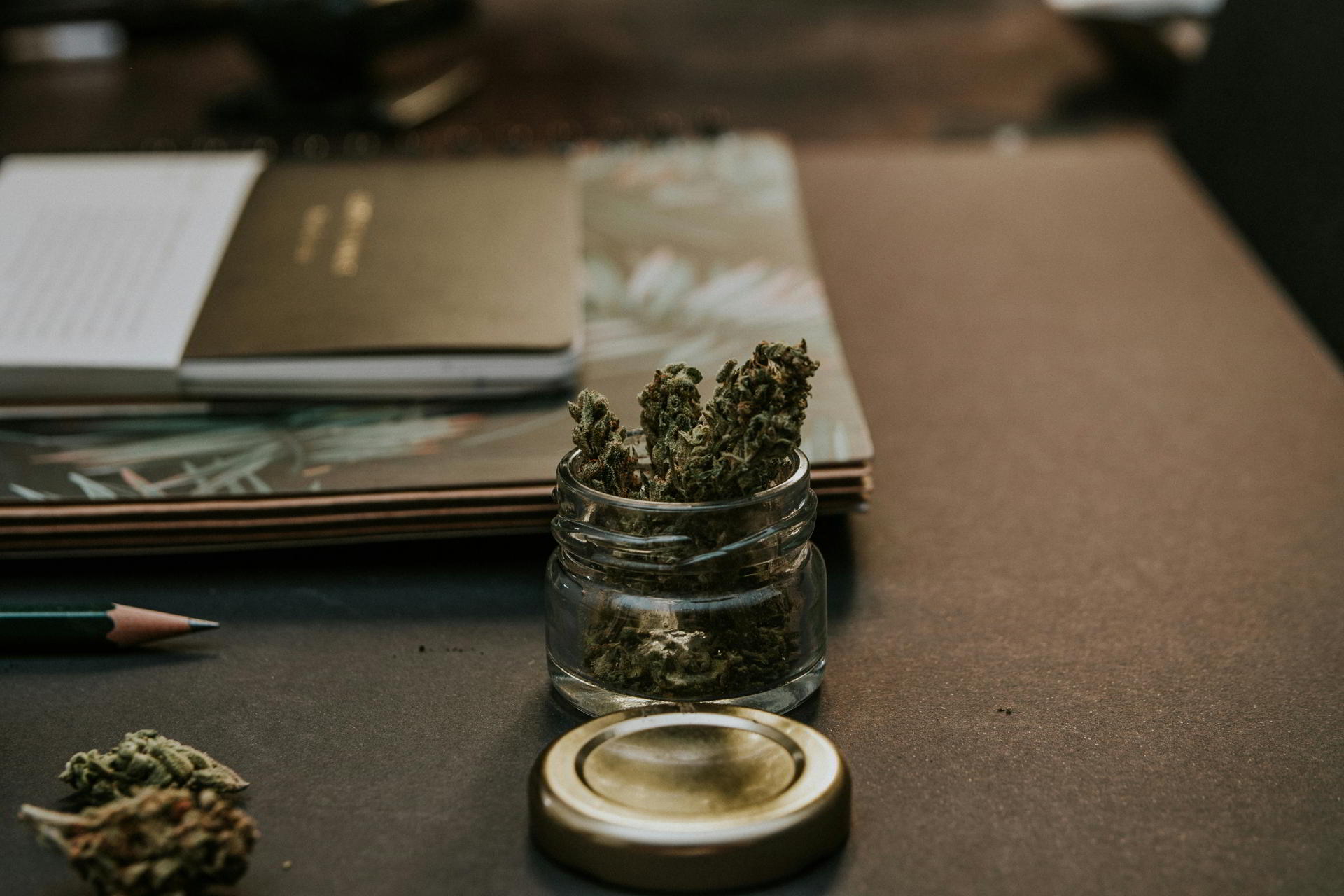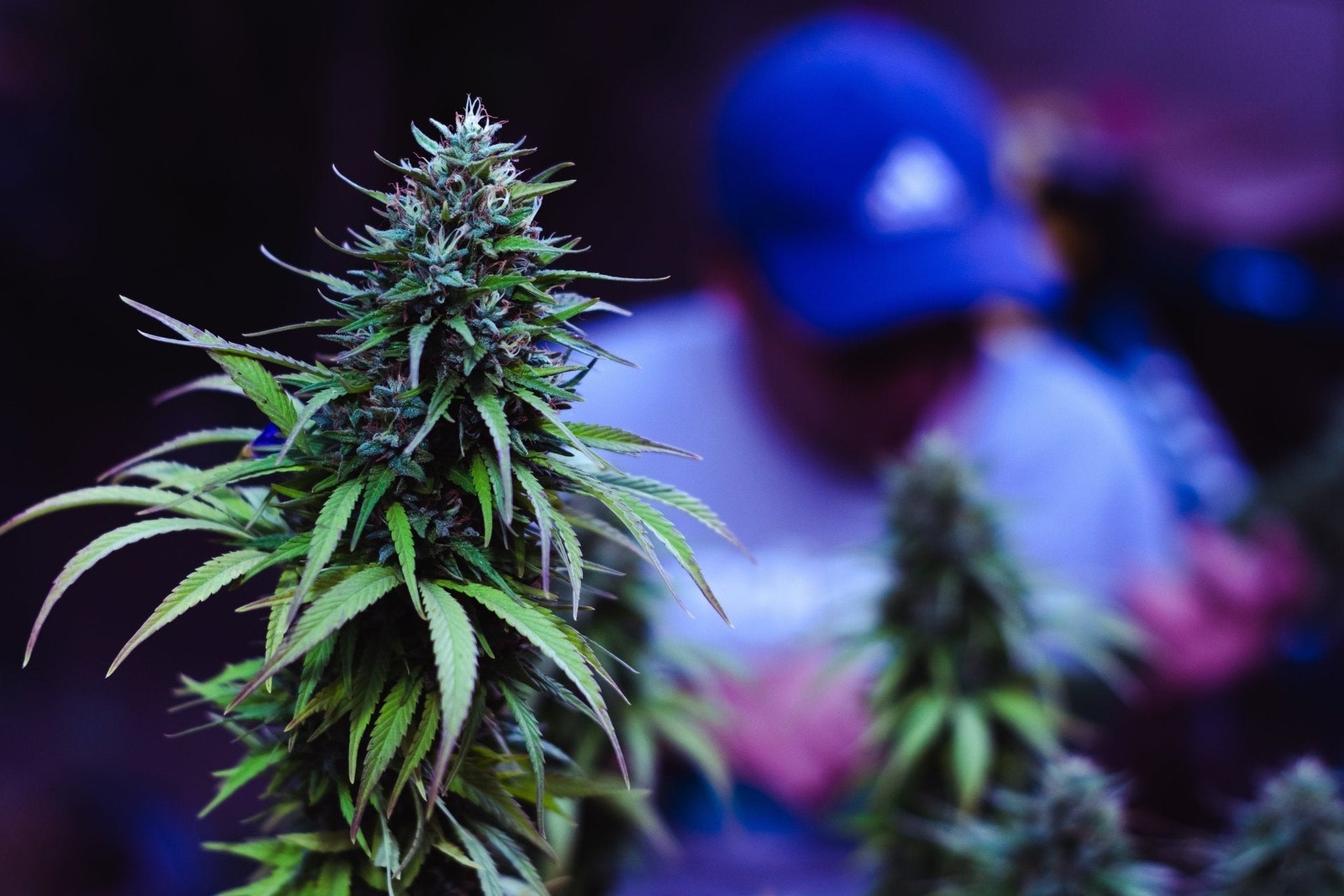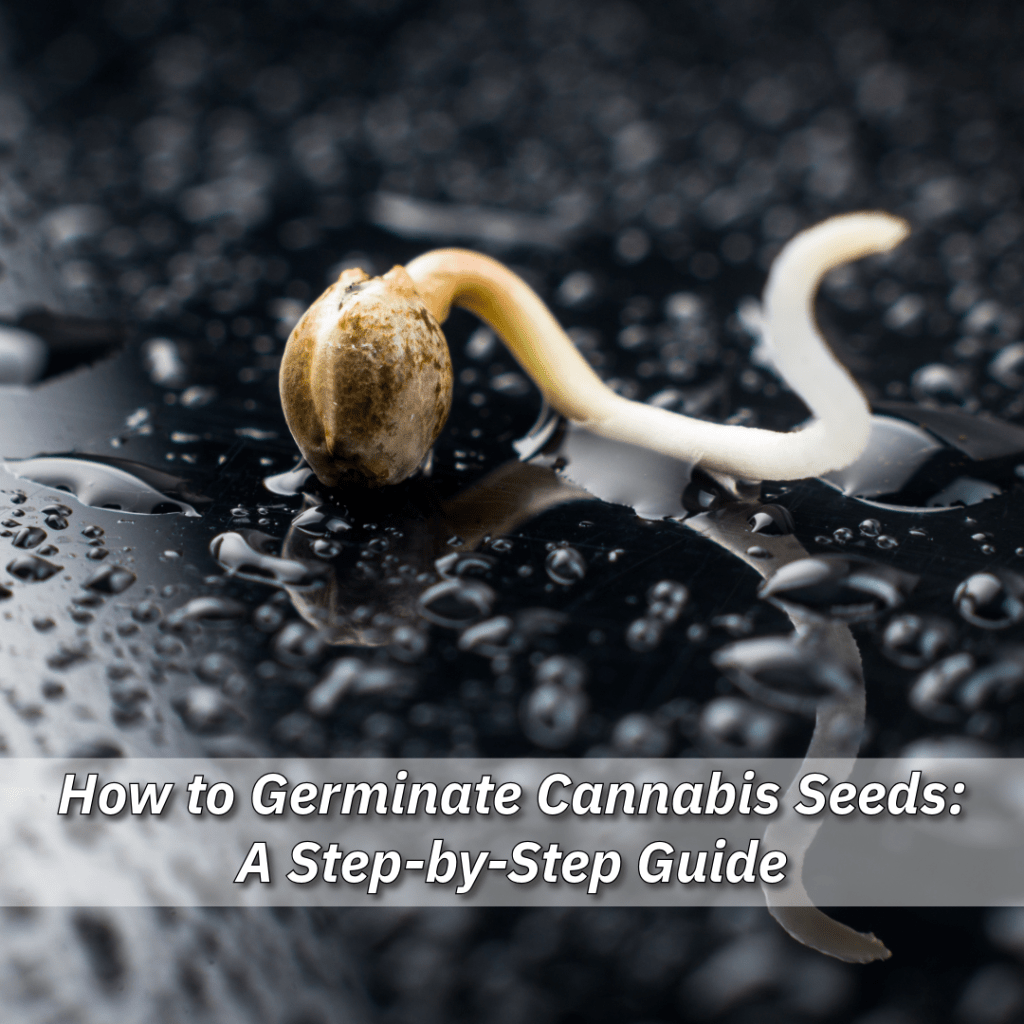
Terpene maximieren – Mehr Aroma & Geschmack beim Anbau
Mehr Aroma, mehr Geschmack: So maximierst du Terpene beim Anbau
Wer auf intensives Aroma, vollen Geschmack und maximale Wirkung aus ist, sollte Terpene in den Fokus rücken. Diese natürlichen Verbindungen bestimmen Duft, Geschmack und den charakteristischen Effekt jeder Sorte – von süßer Zitrone bis würzigem Harz.
Die gute Nachricht: Mit der richtigen Herangehensweise lässt sich die Terpenproduktion gezielt steigern. Dieser Leitfaden zeigt dir, wie du mit passender Genetik, guter Erde, optimaler Beleuchtung und schonender Verarbeitung das volle Potenzial deiner Pflanzen entfalten kannst.
Terpene sind genetisch veranlagt – was nicht im Erbgut steckt, lässt sich nicht „heranzüchten“. Deshalb beginnt alles mit der Auswahl des richtigen Saatguts. Achte auf Sorten, die nicht nur mit THC-Werten werben, sondern klare Angaben zu Aromen und Laborwerten liefern.
1. Start with the Right Genetics
Terpenes aren’t something you can simply add later. In fact, they’re part of the plant’s biological blueprint. No matter how perfect your grow environment is, if the strain you're working with doesn't have the genetic potential to produce high levels of terpenes, you’ll always be limited in the final result.
Die Aromenentwicklung beginnt im Substrat. Lebendige, organische Erde mit aktivem Mikrobiom liefert die ideale Basis. Überdüngung mit synthetischen Mitteln hingegen kann den Geschmack flach wirken lassen oder sogar Terpene hemmen.
Setze auf einfache, biologische Zutaten: Kompost, Wurmhumus, Guano, Mykorrhiza und mikrobiell aktive Zusätze wie Melasse oder Komposttee.
Tipp: Weniger ist mehr – gesunde Pflanzen mit natürlichem Rhythmus bilden mehr Duftstoffe als solche unter Nährstoffstress.
3. Lichtqualität statt nur Intensität
Volles Spektrum bringt volles Aroma. Viele Anbauer berichten nach dem Umstieg von Natriumdampflampen auf moderne LED-Technik von deutlich intensiveren Duftnoten. Dabei kommt es nicht nur auf das Lichtspektrum, sondern auch auf Temperatur und Abstand an.
Tipp: Halte die Temperaturen im oberen Pflanzenbereich zwischen 24 und 28 °C. In der Blüte sind Werte zwischen 800 und 1000 PPFD ideal, um die Terpenbildung anzuregen, ohne sie durch Hitzeeinwirkung zu gefährden.
Tip: If you want to improve flavor and aroma naturally (cannabis geschmack verbessern), try brewing compost teas or using molasses to feed the soil biology. This supports beneficial microbes that in turn support your plant’s ability to create more nuanced terpene profiles. Keep your feeding schedule simple and clean, and avoid nutrient burn at all costs, as it’s one of the fastest ways to mute your terpene potential.
3. Let There Be (the Right) Light: Lighting Strategies for Maximum Terpenes
Orientiere dich an den Trichomen: Milchige Köpfe mit leichtem Bernsteinstich signalisieren das optimale Fenster für maximale Aromaausprägung.
Tipp: Nutze auch deine Nase – wenn das Bouquet komplex, rund und ausbalanciert ist, ist der Moment gekommen. Sorten am besten einzeln beurteilen und nicht nach Kalender ernten.
Remember that the light’s intensity, duration, and temperature also matter. Excessive light stress, especially during the flowering stage, can lead to heat buildup that causes delicate terpenes to evaporate before harvest. On the flip side, too little light can stunt development and lead to underwhelming buds. Balance is key here.
Nach der Ernte beginnt die sensible Phase: Trocknung und Curing entscheiden darüber, ob dein Produkt geschmacklich überzeugt. Zu schnelles Trocknen lässt das Aroma verschwinden – zu feuchtes Lagern fördert Schimmel.
4. Timing Is Everything: Harvest When Terpenes Peak
Tipp: Je länger das Curing (bis zu 12 Wochen), desto ausdrucksstärker das Endprodukt. Dunkel, kühl und luftdicht lagern – so bleibt das Terpenprofil langfristig erhalten.
Wer hochwertige Ergebnisse erzielen will, schaut nicht nur auf Wirkstoffgehalt. Geschmack, Geruch und Terpenkomplexe entscheiden darüber, ob ein Produkt wirklich Eindruck hinterlässt. Wer konsequent auf Qualität achtet – vom Samen bis zur Trocknung – wird mit außergewöhnlichem Charakter und tiefer Wirkung belohnt.
Tip: Monitor your plants daily during the final two weeks of flower. Use a jeweler’s loupe or digital microscope to check trichome maturity, and take notes on the aroma. If you’re growing multiple strains, harvest them individually rather than all at once. Each cultivar has its own rhythm, and honoring that is key to maximizing both potency and flavor (cannabis erntezeitpunkt).
5. Don’t Rush the Finish: Drying and Curing for Terpene Preservation
You’ve put weeks, or maybe months, into cultivating terpene-rich plants. But your work isn’t done yet. What you do after harvest is just as important as everything that came before. In fact, drying and curing are where the real magic happens. It can also be where it all goes wrong.
Terpenes are delicate and evaporate easily when exposed to heat, light, or overly dry conditions. To preserve those precious volatile compounds, you need to go slow and steady. Start by drying your trimmed (or whole) plants in a dark, well-ventilated space. Ideal conditions are around 18–22°C with 50–60% humidity. This process should take 7–14 days depending on your environment. Don’t crank up the heat or aim to “speed dry”. That’s just a fast track to crispy outsides, grassy flavors, and muted terpenes.
Once the stems snap instead of bend, your buds are ready for the cure. Place them in airtight glass jars, filling each jar about 70% to allow room for airflow. Open the jars daily for the first week to release moisture and bring in fresh air. This is called “burping.” Over the next few weeks, internal moisture balances out, and the terpene profile stabilizes.
Tip: Cure your buds for at least 2–4 weeks for best results (cannabis trocknen und curen), but some growers go up to 8–12 weeks for maximum smoothness and complexity. Store jars in a cool, dark place to avoid terpene degradation over time. If your goal is to increase terpene expression and improve overall quality (cannabis geschmack verbessern, cannabis qualität steigern), this final phase is where you seal the deal. Treat it with as much care as every other part of your grow—and your flower will speak for itself.
1. Genetik ist der Schlüssel
Maximizing terpene expression is all about making intentional choices at every stage of the grow. When you take the time to cultivate for flavor, not just yield, you’re well on your way to growing better buds with deeper flavors and smoother smoke.
Mehr Aroma, mehr Geschmack: So maximierst du Terpene beim Anbau
Wer auf intensives Aroma, vollen Geschmack und maximale Wirkung aus ist, sollte Terpene in den Fokus rücken. Diese natürlichen Verbindungen bestimmen Duft, Geschmack und den charakteristischen Effekt jeder Sorte – von süßer Zitrone bis würzigem Harz.
Die gute Nachricht: Mit der richtigen Herangehensweise lässt sich die Terpenproduktion gezielt steigern. Dieser Leitfaden zeigt dir, wie du mit passender Genetik, guter Erde, optimaler Beleuchtung und schonender Verarbeitung das volle Potenzial deiner Pflanzen entfalten kannst.
Terpene sind genetisch veranlagt – was nicht im Erbgut steckt, lässt sich nicht „heranzüchten“. Deshalb beginnt alles mit der Auswahl des richtigen Saatguts. Achte auf Sorten, die nicht nur mit THC-Werten werben, sondern klare Angaben zu Aromen und Laborwerten liefern.
1. Start with the Right Genetics
Terpenes aren’t something you can simply add later. In fact, they’re part of the plant’s biological blueprint. No matter how perfect your grow environment is, if the strain you're working with doesn't have the genetic potential to produce high levels of terpenes, you’ll always be limited in the final result.
Die Aromenentwicklung beginnt im Substrat. Lebendige, organische Erde mit aktivem Mikrobiom liefert die ideale Basis. Überdüngung mit synthetischen Mitteln hingegen kann den Geschmack flach wirken lassen oder sogar Terpene hemmen.
Setze auf einfache, biologische Zutaten: Kompost, Wurmhumus, Guano, Mykorrhiza und mikrobiell aktive Zusätze wie Melasse oder Komposttee.
Tipp: Weniger ist mehr – gesunde Pflanzen mit natürlichem Rhythmus bilden mehr Duftstoffe als solche unter Nährstoffstress.
3. Lichtqualität statt nur Intensität
Volles Spektrum bringt volles Aroma. Viele Anbauer berichten nach dem Umstieg von Natriumdampflampen auf moderne LED-Technik von deutlich intensiveren Duftnoten. Dabei kommt es nicht nur auf das Lichtspektrum, sondern auch auf Temperatur und Abstand an.
Tipp: Halte die Temperaturen im oberen Pflanzenbereich zwischen 24 und 28 °C. In der Blüte sind Werte zwischen 800 und 1000 PPFD ideal, um die Terpenbildung anzuregen, ohne sie durch Hitzeeinwirkung zu gefährden.
Tip: If you want to improve flavor and aroma naturally (cannabis geschmack verbessern), try brewing compost teas or using molasses to feed the soil biology. This supports beneficial microbes that in turn support your plant’s ability to create more nuanced terpene profiles. Keep your feeding schedule simple and clean, and avoid nutrient burn at all costs, as it’s one of the fastest ways to mute your terpene potential.
3. Let There Be (the Right) Light: Lighting Strategies for Maximum Terpenes
Orientiere dich an den Trichomen: Milchige Köpfe mit leichtem Bernsteinstich signalisieren das optimale Fenster für maximale Aromaausprägung.
Tipp: Nutze auch deine Nase – wenn das Bouquet komplex, rund und ausbalanciert ist, ist der Moment gekommen. Sorten am besten einzeln beurteilen und nicht nach Kalender ernten.
Remember that the light’s intensity, duration, and temperature also matter. Excessive light stress, especially during the flowering stage, can lead to heat buildup that causes delicate terpenes to evaporate before harvest. On the flip side, too little light can stunt development and lead to underwhelming buds. Balance is key here.
Nach der Ernte beginnt die sensible Phase: Trocknung und Curing entscheiden darüber, ob dein Produkt geschmacklich überzeugt. Zu schnelles Trocknen lässt das Aroma verschwinden – zu feuchtes Lagern fördert Schimmel.
4. Timing Is Everything: Harvest When Terpenes Peak
Tipp: Je länger das Curing (bis zu 12 Wochen), desto ausdrucksstärker das Endprodukt. Dunkel, kühl und luftdicht lagern – so bleibt das Terpenprofil langfristig erhalten.
Wer hochwertige Ergebnisse erzielen will, schaut nicht nur auf Wirkstoffgehalt. Geschmack, Geruch und Terpenkomplexe entscheiden darüber, ob ein Produkt wirklich Eindruck hinterlässt. Wer konsequent auf Qualität achtet – vom Samen bis zur Trocknung – wird mit außergewöhnlichem Charakter und tiefer Wirkung belohnt.
Tip: Monitor your plants daily during the final two weeks of flower. Use a jeweler’s loupe or digital microscope to check trichome maturity, and take notes on the aroma. If you’re growing multiple strains, harvest them individually rather than all at once. Each cultivar has its own rhythm, and honoring that is key to maximizing both potency and flavor (cannabis erntezeitpunkt).
5. Don’t Rush the Finish: Drying and Curing for Terpene Preservation
You’ve put weeks, or maybe months, into cultivating terpene-rich plants. But your work isn’t done yet. What you do after harvest is just as important as everything that came before. In fact, drying and curing are where the real magic happens. It can also be where it all goes wrong.
Terpenes are delicate and evaporate easily when exposed to heat, light, or overly dry conditions. To preserve those precious volatile compounds, you need to go slow and steady. Start by drying your trimmed (or whole) plants in a dark, well-ventilated space. Ideal conditions are around 18–22°C with 50–60% humidity. This process should take 7–14 days depending on your environment. Don’t crank up the heat or aim to “speed dry”. That’s just a fast track to crispy outsides, grassy flavors, and muted terpenes.
Once the stems snap instead of bend, your buds are ready for the cure. Place them in airtight glass jars, filling each jar about 70% to allow room for airflow. Open the jars daily for the first week to release moisture and bring in fresh air. This is called “burping.” Over the next few weeks, internal moisture balances out, and the terpene profile stabilizes.
Tip: Cure your buds for at least 2–4 weeks for best results (cannabis trocknen und curen), but some growers go up to 8–12 weeks for maximum smoothness and complexity. Store jars in a cool, dark place to avoid terpene degradation over time. If your goal is to increase terpene expression and improve overall quality (cannabis geschmack verbessern, cannabis qualität steigern), this final phase is where you seal the deal. Treat it with as much care as every other part of your grow—and your flower will speak for itself.
1. Genetik ist der Schlüssel
Maximizing terpene expression is all about making intentional choices at every stage of the grow. When you take the time to cultivate for flavor, not just yield, you’re well on your way to growing better buds with deeper flavors and smoother smoke.



